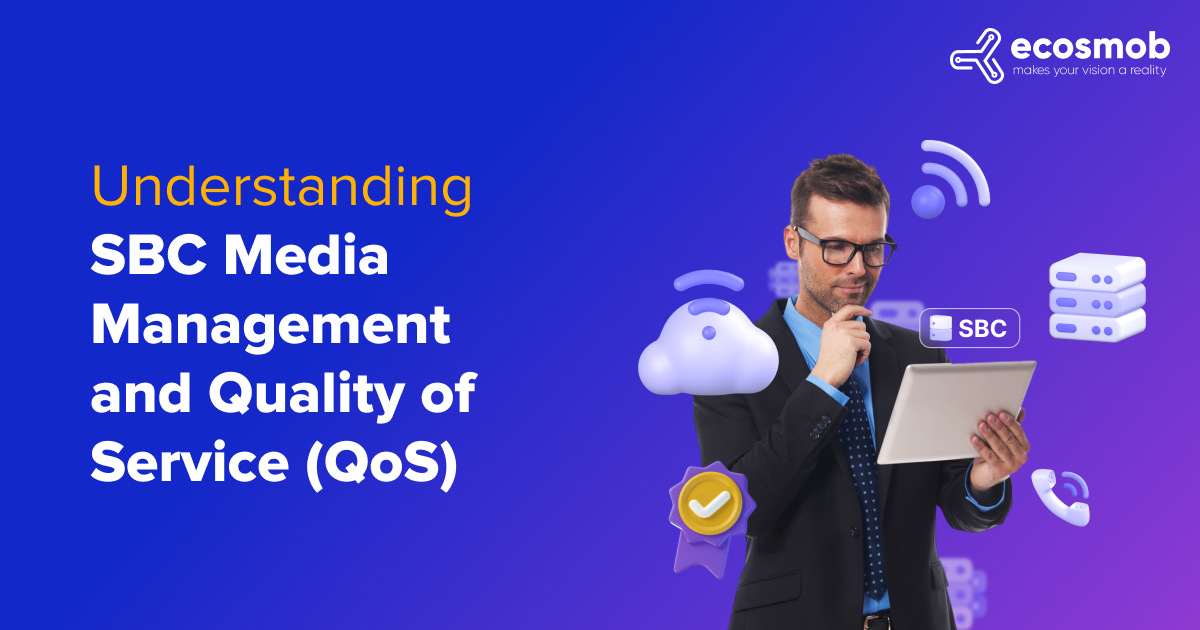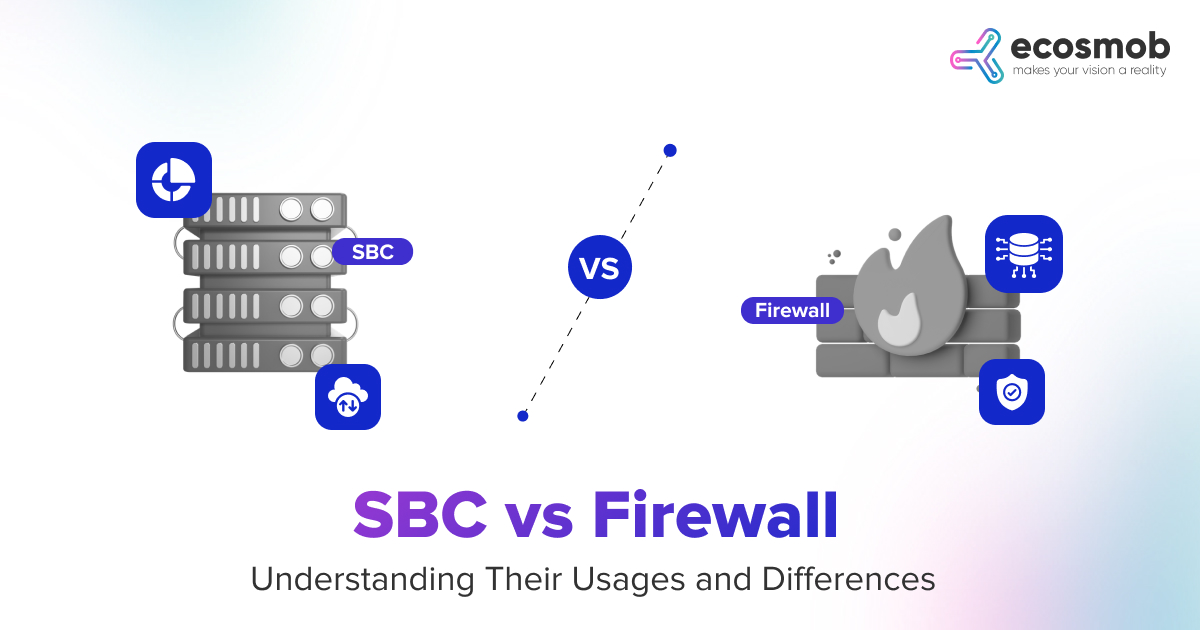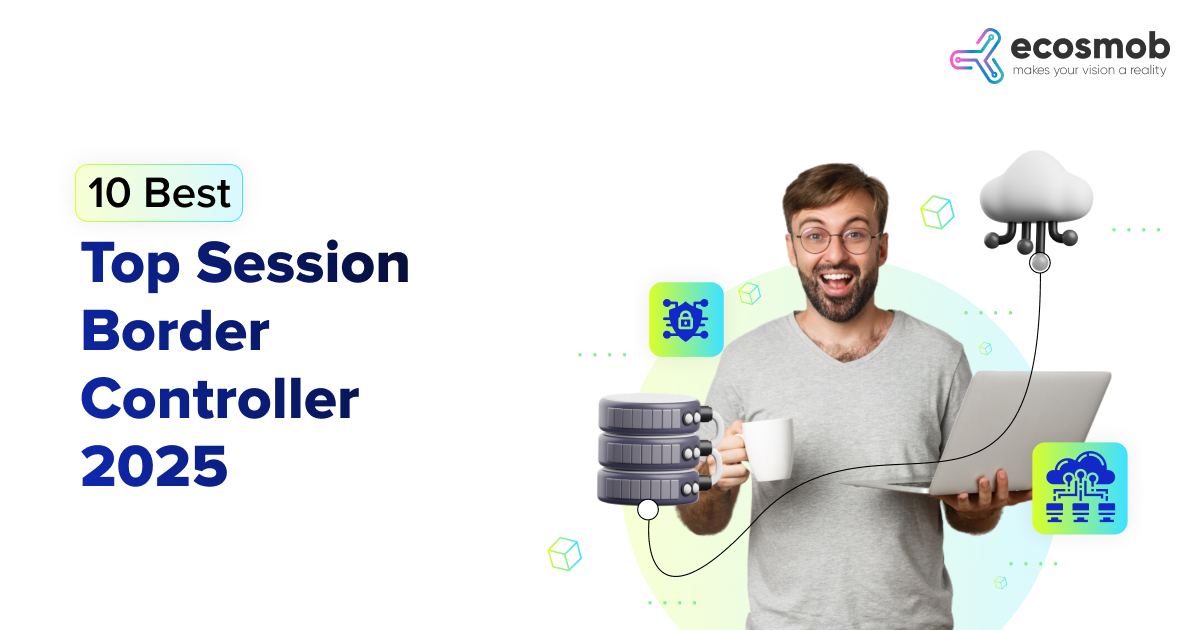QUICK SUMMARY
Session Border Controllers (SBCs) enhance digital communication by managing media streams and ensuring QoS. Key functions include media anchoring, transcoding, and prioritization to optimize VoIP call quality.
Session Border Controllers, or SBCs, are essential in many communication stacks. The need for SBCs is rising as service providers around the globe continue to abandon conventional communication methods in favor of harnessing the power of the internet. By delving into SBC media management and Quality of Service (QoS) mechanisms, we can uncover how these technologies anchor, transcode, and prioritize media streams to deliver optimal performance. This comprehensive exploration will cover the essentials of SBC telecom and QoS mechanisms, focusing on media anchoring, transcoding, and bandwidth management techniques.
Boost Your Call Quality in Just Minutes
How Session Border Controllers Enhance Telecom Infrastructure?
Session Border Controllers are integral to modern telecom infrastructure, acting as gatekeepers that manage and secure VoIP and video traffic between networks. Their role in telecom is multifaceted, involving the enforcement of security policies, the optimization of media streams, and the enhancement of overall communication quality. To truly understand the impact of SBCs on QoS, it’s essential to explore their core functionalities.
Media Anchoring: The Bedrock of VoIP Call Quality
Media anchoring is a fundamental aspect of SBC configuration that directly influences VoIP call quality. SBCs provide a controlled environment to manage and monitor traffic by acting as an intermediary for media streams. This process involves anchoring media streams within the SBC, ensuring all communication flows through a centralized point. This centralized handling allows for effective media management, which is crucial for optimizing VoIP call quality and addressing call quality issues.
Transcoding: Enhancing Compatibility and Performance
Transcoding is another critical function SBCs perform to ensure seamless communication across diverse networks and devices. By converting media streams from one codec to another, SBC transcoding enhances compatibility and improves VoIP optimization. This process is vital for maintaining high-quality voice and video sessions, mainly when dealing with varying network conditions and endpoints. Proper SBC configuration and transcoding mechanisms help mitigate latency and packet loss, leading to a superior communication experience.
QoS Mechanisms: Prioritizing Critical Traffic
Quality of Service (QoS) mechanisms are essential for managing network resources and ensuring that critical traffic receives priority. SBCs utilize various QoS mechanisms to monitor and control traffic flow, ensuring that voice and video packets are delivered efficiently. These mechanisms include:
- Bandwidth Management: Allocating sufficient bandwidth to voice and video streams to avoid congestion.
- Traffic Shaping: Regulating data transfer rates to prevent network overload.
- Priority Queuing: Assigning higher priority to critical traffic to ensure timely delivery.
Effective QoS mechanisms in SBC integration can significantly improve VoIP call quality, making them indispensable in modern telecom infrastructure. By prioritizing voice and video traffic, SBCs can minimize delays and packet loss, ensuring users a smooth and reliable communication experience.
Bandwidth Management: Optimizing Network Resources
Bandwidth management is a critical component of SBC configuration that ensures efficient utilization of network resources. By employing techniques such as bandwidth reservation and dynamic bandwidth allocation, SBCs can optimize bandwidth usage and prevent network congestion. These techniques are essential for maintaining high-quality VoIP sessions and avoiding call quality issues.
Techniques for Bandwidth Optimization
Effective bandwidth optimization techniques are essential for providing VoIP solutions that meet modern communication networks’ high demands. Some of the primary methods employed by SBCs include:
-
Bandwidth Reservation: Ensuring dedicated bandwidth for voice and video streams to maintain consistent quality.
-
Dynamic Bandwidth Allocation: Adjusting bandwidth allocation based on real-time network conditions to optimize performance.
-
Jitter Buffer Management: Implementing jitter buffers to smooth out variations in packet arrival times, reducing latency and improving call quality.
Effective bandwidth optimization techniques are essential for providing solutions for VoIP that meet the high demands of modern communication networks.
SBCs and Prioritization Techniques: Ensuring High-Quality Communication
SBCs employ various prioritization techniques to ensure that critical communication traffic receives the attention it deserves. By prioritizing voice and video packets, SBCs can minimize delays and packet loss, improving VoIP call quality. Some of the standard prioritization techniques include:
-
DiffServ (Differentiated Services): Marking packets with different priority levels to manage traffic effectively.
-
Class-Based Queuing: Group traffic into classes and prioritize based on the class to ensure timely delivery.
-
Traffic Policing: Enforcing bandwidth limits to prevent network abuse and ensure fair resource distribution.
Implementing these prioritization techniques in SBC integration helps improve VoIP call quality and address call quality issues effectively.
Advanced QoS Mechanisms: Ensuring Optimal Performance
In addition to the basic QoS mechanisms discussed above, SBCs employ advanced QoS techniques to further enhance the performance and reliability of VoIP and video communications. These advanced mechanisms include:
-
Adaptive QoS: Dynamically adjusting QoS policies based on real-time network conditions.
-
End-to-End QoS: Ensuring consistent QoS across the entire communication path.
-
QoS Monitoring and Reporting: Continuously monitor QoS metrics and provide detailed reports to identify and address issues.
SBCs provide detailed QoS monitoring and reporting capabilities, allowing network administrators to track key performance indicators (KPIs) such as latency, jitter, packet loss, and bandwidth utilization. By analyzing these metrics, administrators can identify potential issues and take corrective actions to ensure optimal performance.
Implementing SBCs: Best Practices and Considerations
Implementing SBCs in a telecom network requires careful planning and consideration of numerous factors to ensure successful deployment and optimal performance. Here are some best practices and considerations for implementing SBCs:
Assessing Network Requirements
Before deploying SBCs, it’s essential to assess the network requirements and determine the necessary capacity and capabilities. It includes evaluating the expected traffic volume, the types of media streams that will be handled, and the specific QoS requirements. By understanding the network requirements, administrators can select and configure the appropriate SBCs to meet the network’s demands.
Ensuring Compatibility and Interoperability
SBCs must be compatible with the existing network infrastructure and interoperable with other network elements, such as routers, switches, and endpoints. Ensuring compatibility and interoperability is crucial for seamless integration and efficient operation. It may involve conducting interoperability tests and validating the SBC configuration to ensure it can effectively handle the diverse network environments and devices.https://www.ecosmob.com/session-border-controller-guide/
Configuring Security Policies
Security is a critical aspect of SBC deployment. SBCs must be configured with robust security policies to protect the network from unauthorized access, denial-of-service (DoS) attacks, and fraud. It includes implementing encryption, firewall rules, and access controls to safeguard the confidentiality of communications. By configuring strong security policies, SBCs can enhance the overall security posture of the network.
Monitoring and Maintenance
Continuous monitoring and maintenance are important for ensuring the optimal performance and reliability of SBCs. This includes regular monitoring of QoS metrics, analyzing traffic patterns, and performing routine maintenance tasks such as firmware updates and configuration adjustments. By proactively monitoring and maintaining SBCs, administrators can address and identify potential issues before they impact the quality of VoIP and video communications.
Scalability and Future-Proofing
As network demands grow and evolve, it’s essential to ensure that SBCs can scale to accommodate increased traffic and new technologies. It involves selecting SBCs with sufficient capacity and flexibility to support future growth and advancements in communication technology.
Administrators can ensure the network can deliver high-quality VoIP and video services long-term by planning for scalability and future-proofing.
The Future of SBC Media Management and QoS
In a Nutshell, SBCs play a massive role in ensuring high-quality voice and video sessions through effective media management and QoS mechanisms. As technology evolves, the importance of SBC telecom and QoS mechanisms will continue to grow, making them indispensable tools for modern communication networks.
For businesses and network administrators looking to improve VoIP call quality and optimize network performance, investing in advanced SBC solutions is a strategic move. Explore our range of Ecosmob SBC integration services to find the right solution for your communication needs. Our SBC configuration and QoS mechanisms expertise can help you achieve superior VoIP and video quality, ensuring your users’ seamless and reliable communication experience.
Limited Time Offer: Enhance Your QoS with Our Expert Solutions
FAQs
What is the primary function of a SBC in telecom networks?
The primary function of an SBC is to manage and secure VoIP and video traffic between different networks. SBCs act as gatekeepers, ensuring high-quality communication by anchoring media streams, transcoding, and implementing QoS mechanisms.
How does media anchoring enhance VoIP call quality?
Media anchoring involves routing all media streams through a centralized point within the SBC, allowing for better traffic management and monitoring. This process ensures that voice and video streams are delivered consistently and securely, improving overall call quality.
What role does transcoding play in SBC operations?
Transcoding is crucial for converting media streams from one codec to another, ensuring compatibility across various network environments and devices. This function helps maintain high-quality communication by adapting media streams to the capabilities of different endpoints, reducing latency, and optimizing bandwidth usage.
Why do SBCs use some fundamental QoS mechanisms to prioritize traffic?
SBCs use several QoS mechanisms: bandwidth management, traffic shaping, and priority queuing. These techniques ensure that voice and video packets receive the necessary resources to avoid congestion and maintain high-quality communication.
How does bandwidth management contribute to better VoIP performance?
Bandwidth management involves allocating sufficient bandwidth to voice and video streams, preventing network congestion. Techniques such as bandwidth reservation and dynamic bandwidth allocation ensure that critical traffic maintains consistent quality, even during high usage periods.








![SIP Protocol [SIP Signalling]](https://a4f8b050.delivery.rocketcdn.me/wp-content/uploads/2024/12/Blog-79.jpg)







